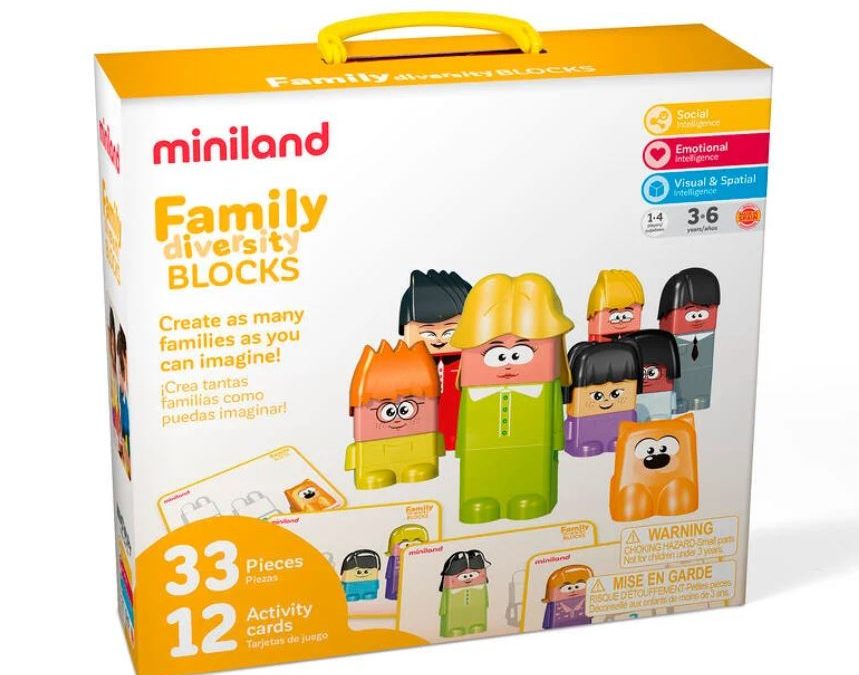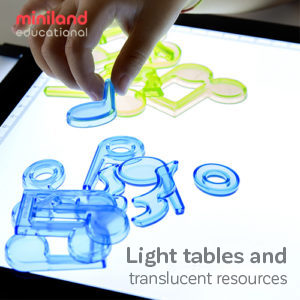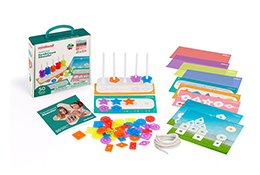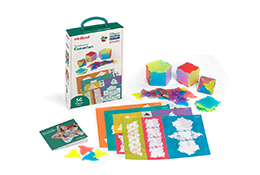Our Lesson Plan series continues with this latest Lesson Plan for our popular Family Diversity Blocks game. This game emphasizes acceptance of diverse nationalities and ethnicities, and helps young children build confidence in their own unique selves and families.
Through game play, children are exposed to diverse families that they must create based on how their own company is composed or by filling in and building the missing family members in the activity cards that they draw. There are endless combinations and opportunities for discussion on similarities and differences to encourage respect and acceptance.
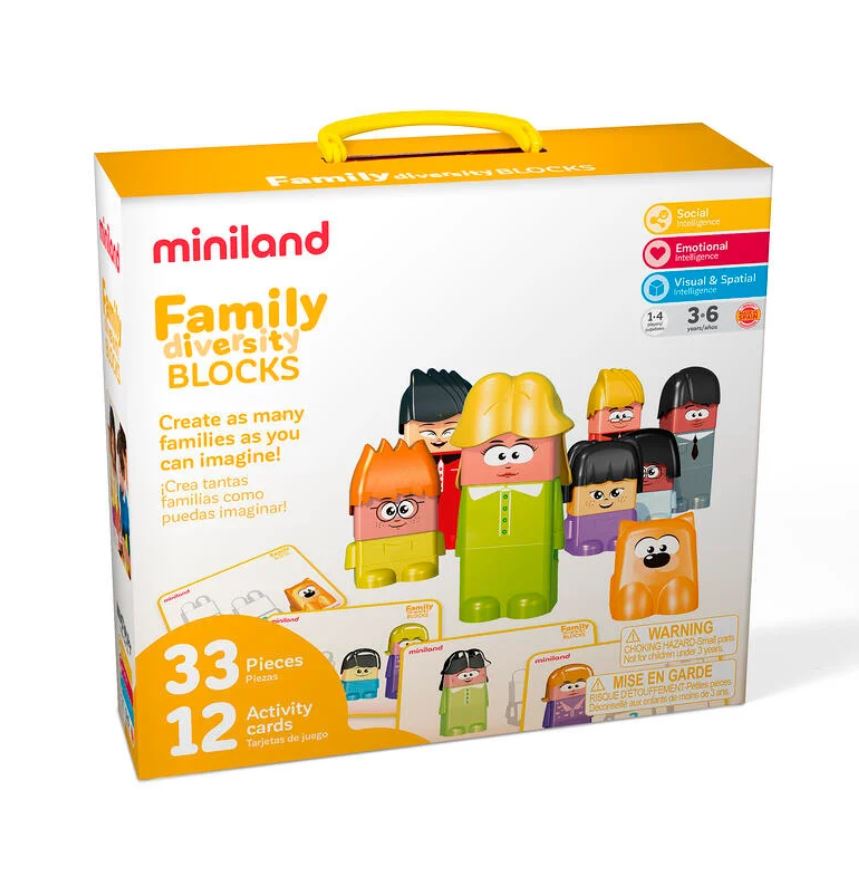
Here’s a breakdown of what the game includes:
Included Materials:
· 33 pcs
· 12 activity sheets
· 1 brochure
Ages: 3 to 6
Players: Anywhere from 2 to the entire classroom (break into 2 to 4 groups)
Price: $38.98
Buy: Amazon, Discount School Supply, Teacher Supply Source
Setup:
Before starting the game, cut out the activity cards along the dotted lines which can be
found in the back of the instructions booklet.
How to Play:
The aim of the game is to recognize and understand the different and diverse family units
present in today’s society. The game is to be played with the diversity cards
. On each activity card there is a missing character symbol:
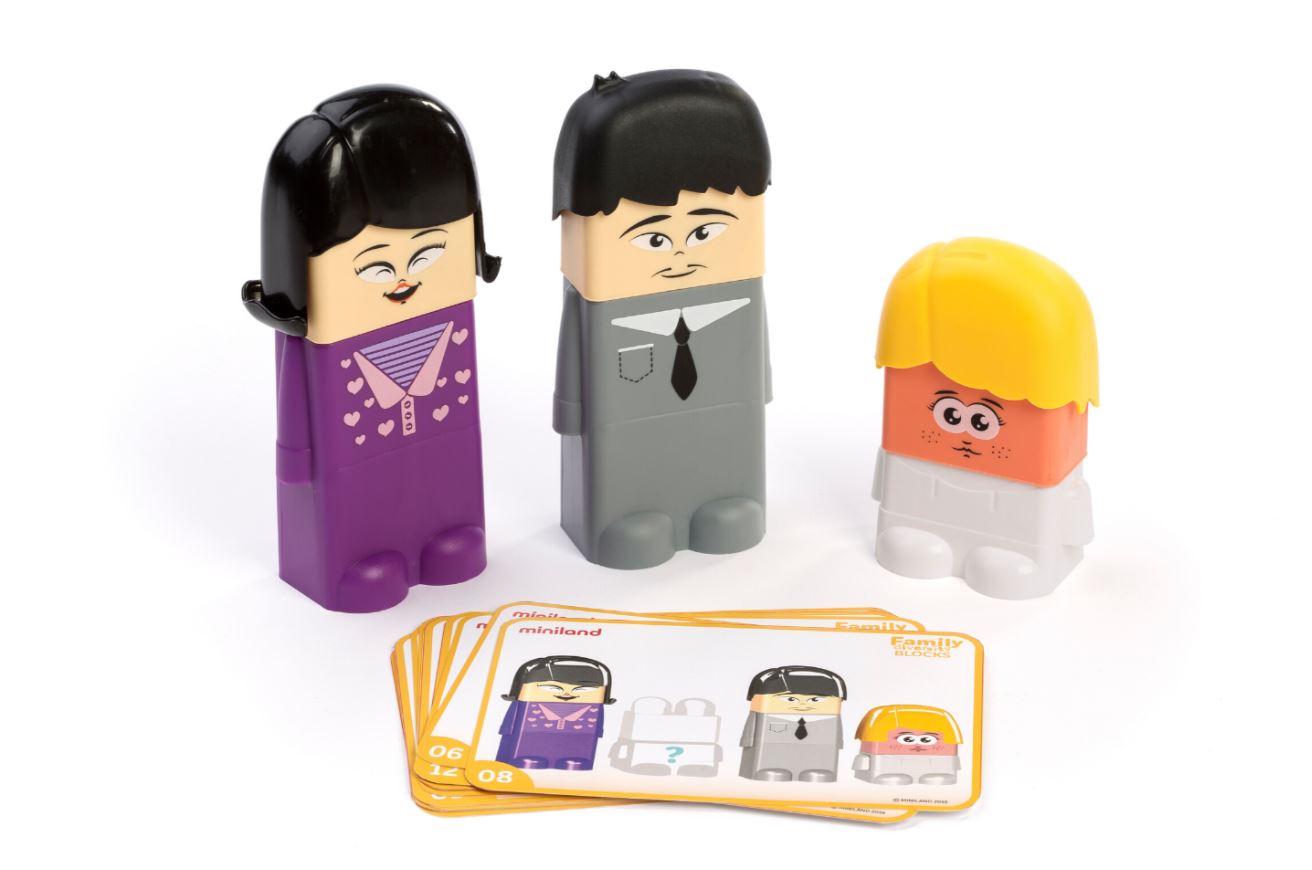
These cards create a challenge for the players to choose a character that they believe will complete the family. Players must then explain their answer.
On the activity cards, players will be able to identify the family dynamic by a symbol located at the top of the card.
Here are TWO ways to play with Family Diversity Blocks:
1. Complete the family:
- Select an activity card
- Choose one card to model by selecting and assembling the different figurine pieces (body, face, hair).
- Compare assembled figurines to playing card for accuracy.
- Encourage players to discuss the role of each family member.
- Players must then identify the missing characters that they believe would best
- Complete the family and explain their choice.
2. Create your own family:
- Lay out all of the unassembled blocks and cards
- Children will take turns and choose the activity card that shows the family composition that best matches their own
- They will then build the family with the blocks (hair, skin and body)
- We will ask them to talk about the roles each character in their family has based on their own criteria
- Encourage players to discuss the role of each family member and the family dynamic
Teaching Guide:
Set: (Introduction to the game)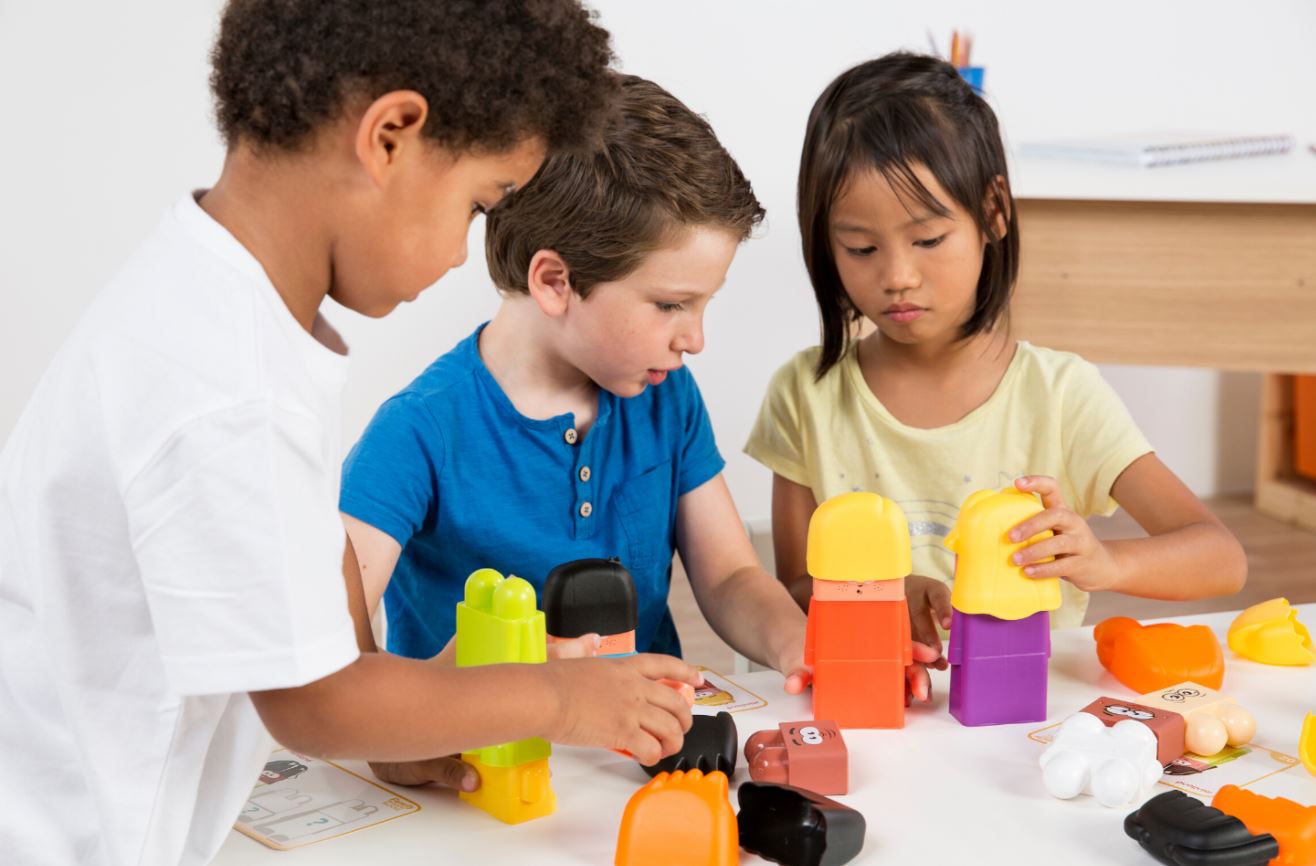
T: Today we are going to play a game where we will be learning about family diversity.
S (Students): YAY!
Q&A: Can you say family diversity?
S: Family Diversity!
T: The word diversity means that there are differences in the way something or someone looks. There is diversity in almost anything you can think of, for example: animals, cars, plants.
Q&A: Can you think of other things that have diversity? (Prompt students)
T: That’s right, people have diversity. Although we are all people, we all look different to each other. We might have different hair styles, skin color, and facial features. We may walk or be in a wheel chair.
T: Look at the person sitting next to you, look at what makes them diverse from you.
Q &A: What are some of the differences or similarities that you noticed? (Prompt students)
T: Let’s look at these two figurines (show two pre-made figurines) what is different between these two characters. (Discuss the differences)
T: We are going to be putting together diverse figurines and families. Just like every person is diverse, every family is also diverse. Every family is a little bit different than each other and that is totally ok.
T: Let’s look at all the pieces we have to make these diverse families.
Q &A: What are some groups that we can put these pieces into?
(Allow children to explore the pieces, categorizing them, and allowing them to familiarize
themselves with skin color, gender, age, and hair styles.)
T: Now we are ready to start assembling diversity!
Q & A: Are you ready?
Complete the Family.
T: Select a blue card from the center of the table. Now go ahead and pick the pieces that match the pictures on the card. Make sure to pick the skin color, body type and hairstyle that the card is showing.
T: Great job! Let’s talk about the characters you created.
Q & A : Do you notice that there is a question mark on the playing cards?
T: These question marks mean that you need to guess what family member is missing in this family. Do you see how there are big question marks and little question marks? The little question mark represents a child, the big question mark represents an adult.
T: Go ahead and create the missing family member that you feel would best fit into this family.
(Discuss the choices the students make)
T: What are some of the similarities in each of the characters? What are some of the
differences? What makes these characters diverse?
T: Now let’s notice the symbol at the top of the card. These symbols mean how the family is put together. Sometimes families look like traditional families and sometimes they look like non-traditional families.
T: A traditional family is a family that has a mom, dad, and kids. Can you say traditional?
T: But most families are non-traditional. Can you say non-traditional?
T: Non-traditional families are diverse. There are many different types of non-traditional
families. There are families that live with their grandparents, there are some that live with only mom or just only dad. There are some families where dad no longer lives with you but lives in a different home with another mom and maybe other children. There are families that maybe have two dads and no mom, or two moms and no dad.
Q &A: Look at the family you created. Do you think you created a traditional family or a nontraditional family? (Prompt students for discussion)
Curriculum: Family Diversity Blocks touch upon the following areas:
- Family Diversity
- Language Development
- Building and matching
- Sorting and Categorizing
- Emotional Intelligence
- Respecting Others
- Accepting Others
- Self-Acceptance
- Self-Realization
Interaction:
Upon playing with Family Diversity Blocks you will find your students will be:
- Engaged and active
- Kinder to one another
- Ask many questions
- Encouraged to use their imaginations
Here are some easy tips to help guide your students through these Two Lesson Plans:
- Lay out all the pieces and have your students sort the pieces based on category characteristics. This is especially helpful for the body types, skin colors, faces and hair styles.
- Answer questions as they come, and perhaps focus on “traditional” and “non-traditional” families vs. broken or stable for this age group.
Family Diversity Blocks is a great tool to teach the concept of diverse and traditional and non-traditional families in a game-like setting. A quick introductory lesson may be needed to familiarize the students with the differences in each of the characters so that they are able to accurately select the matching pieces to build the figurines. Although there is a lot of educational discussion in this game, since the children are building while playing it kept their attention active throughout gameplay. While matching and assembling students were learning concepts of similarities and differences amongst people and families.
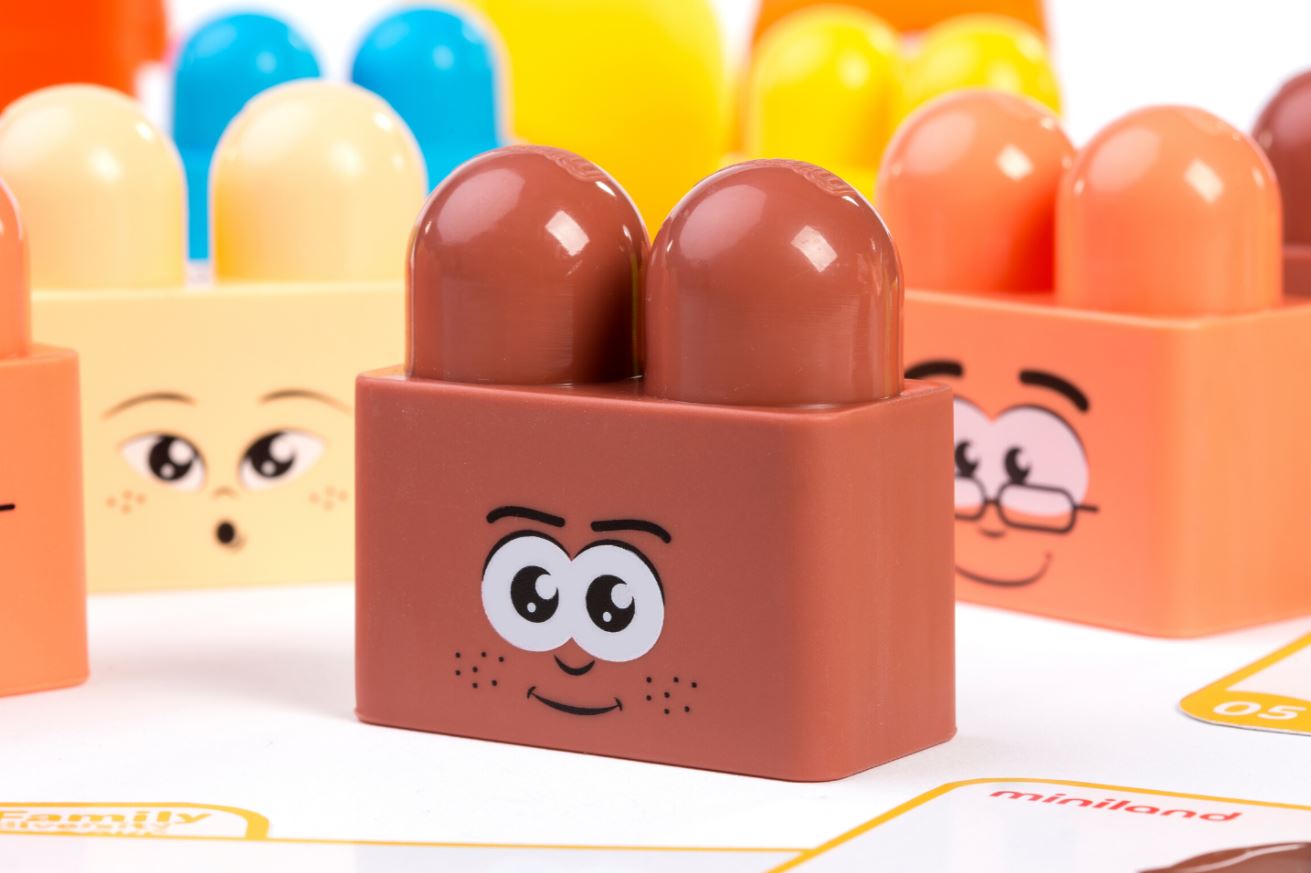
Through this fun and active game, children manipulate the concept of family diversity and the lessons were easily taught and accepted by the end.
It’s also a great kit to have on hand for free form play to let children create their own characters and families alone or in groups, without a guided Lesson from you.
For more Lesson Plan ideas from Miniland products and offerings, keep checking the Miniland USA Blog.
